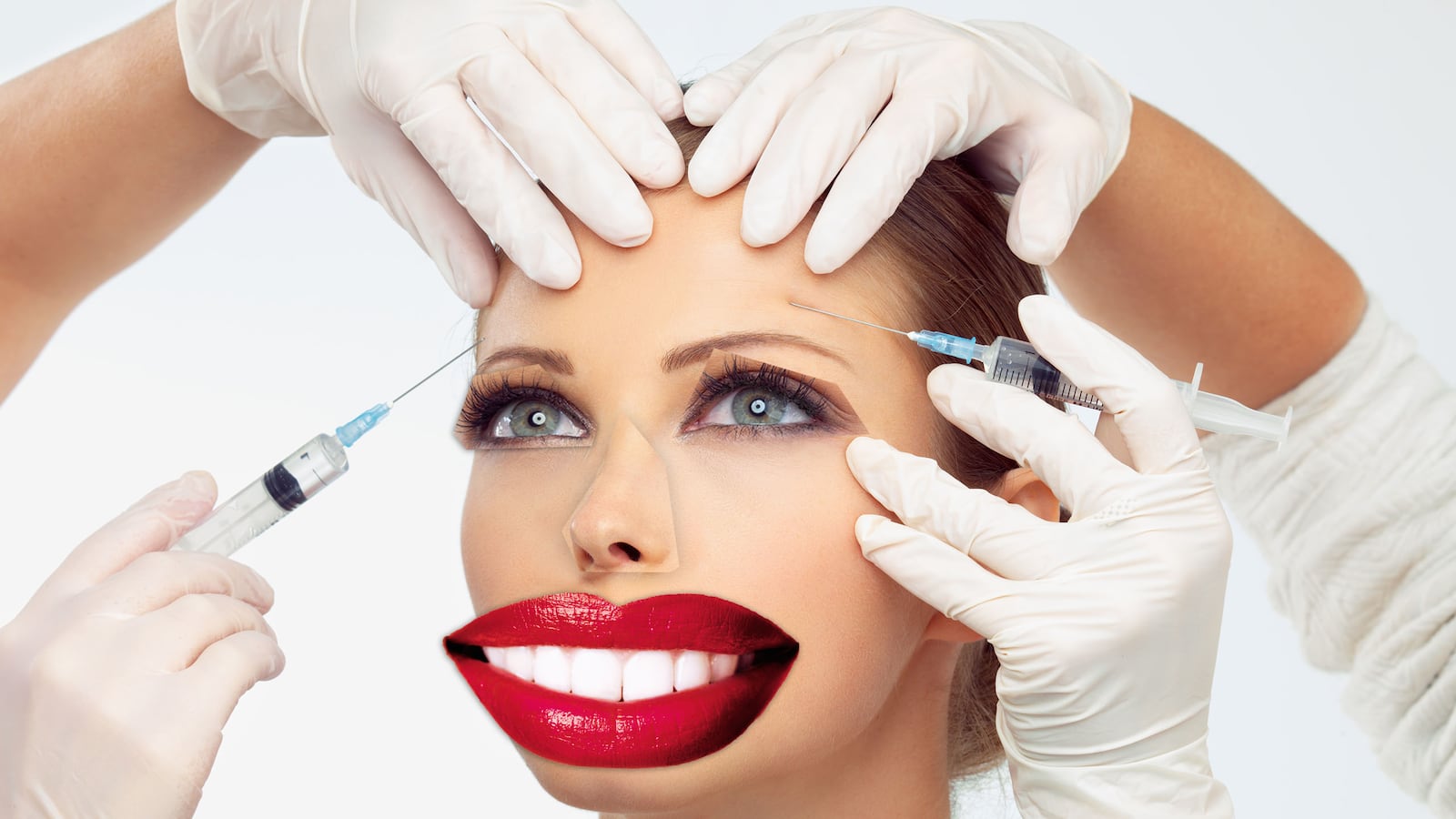Nearly half of America’s physicians feel completely wiped out from their high pressure jobs, to the point where one in seven has reported suicidal ideations. Such were the grim findings from Medscape’s annual report on burnout, depression, and suicide risk among doctors across the country, which the online resource for medical professionals released earlier this month.
Only one set of doctors in the study seemed pretty happy about their jobs: plastic surgeons.
The Daily Beast reached out to plastic surgeons across the country to figure out why they appear to be happier than their counterparts. Their answers offered a glimpse into how the doctor burnout crisis could be tackled, and broke many misperceptions the public might have about plastic surgeons.
Here’s why plastic surgeons might be happier than their counterparts in medicine:
MORE CONTROL OVER THEIR LIVES
Plastic surgeons who practice cosmetic surgery have an advantage over most of their colleagues: much of what they practice is elective.
That means that, to a certain extent, cosmetic surgeons are able to handle scheduling on their own terms rather than life being dictated by the rhythms of a hospital. “Much of our surgery is planned ahead of time, unlike traumatic surgery,” Alan Matarasso, who owns a private practice in Manhattan and is a spokesperson for the American Society of Plastic Surgeons, said. “Depending on the characteristics of your practice, you can dictate which types of operations you can have, which can be satisfying.”
It’s important to note two caveats here. Reconstructive surgeons are also part of the plastic surgery umbrella and aren’t necessarily able to take advantage of scheduling elective surgeries. More importantly, the fact that there is flexibility in planning surgeries might create the false impression that cosmetic surgeons swoop into their office whenever they want for a few hours, do their magic, then skip home in time to pick up the kids and live their lives.
Every plastic surgeon who spoke to The Daily Beast worked long hours. Jeffrey Janis, a professor of plastic surgery at Ohio State University, said that he takes issue with any public misperception that plastic surgeons are living a cushy 9-to-5, saying he often gets to bed at midnight, is up at 3 am, and in the office by 4 am. Another plastic surgeon, Debra Johnson, based in Sacramento, said she’s spent “nights and weekends [and] time away from family.”
Still, plastic surgery’s higher happiness rates could be related to what Janis calls “the commoditization of medicine.”
“Hospital administrators often mandate how many patients we need to see per hour, using RVUs [relative value units, a common measurement of work produced amongst physicians and hospitals systems],” he explained. “Delayed gratification and long hours and not hearing the words ‘thank you’—that’s not what motivates us. Some people can take advantage of that. When we’re asked to see more patients we are being asked to document everything as if we are giving a deposition. That’s why burnout rates are up.”
In a private practice, though, that pressure for constant churn isn’t there.
“I think we are less stressed by issues other physicians face, like electronic medical records, hassling with insurance companies, dealings with hospital bureaucracies, and taking care of emergency patient problems,” Johnson said. “We have those same issues, but because a percentage of our patients are private-pay that we can care for in our own comfortable surgery suites, we just have more control over our lives.
“I think what takes a lot of docs down is the loss of control.”
MONEY
Also making plastic surgeons happy: money.
Matarasso said that many private practices for cosmetic surgery are able to take advantage of payment outside of insurance. Fees for services can be competitive, and without insurance, more of that pay can go to the surgeon than other middlemen.
“Truthfully, we don’t have to deal with insurance companies as much as other specialties might,” confessed John Layke, a plastic surgeon who, with partner Payman Danielpour, is a co-founder of Beverly Hills Plastic Surgery Group. “That has made it much tougher for other physicians.”
“I think generally we do well financially in the spectrum of what doctors make,” Matarasso agreed.
POSITIVE FEEDBACK
Then there’s the old adage about making a difference. Of course, all doctors take the Hippocratic Oath and are bound to save lives. But plastic surgeons who talked with The Daily Beast said the effects of their surgery are immediately visible to the world—and to the patient.
“For lack of a better term, we see the fruits of our labor right in front of us,” Matarasso said. “You see the results. There’s fairly immediate feedback. The positive reinforcement is very quick.”
Layke agreed. “Regardless of whether or not you are dealing with a 16-year-old that is getting a rhinoplasty for a lack of self-confidence, or a woman who is getting her breasts reconstructed for cancer, this profession can change lives for the better,” he said.
The same rings true for reconstructive surgery. Johnson said that her work traveling around the world has been profound. “The thing that particularly drew me in was the ability to travel and provide free reconstructive surgery around the world,” she said. “In just this past year I’ve worked in Tanzania, Guatemala, and Myanmar. Throughout my career I’ve spent about a month a year working in developing countries providing surgery and teaching. It’s incredibly gratifying.”
VARIETY
Sure, there are plastic surgeons who focus solely on breast reconstruction, but most of the plastic surgeons who spoke to The Daily Beast work all over the body for both cosmetic and reconstructive surgeries.
“My practice is about 60 percent cosmetic and 40 percent reconstructive,” Johnson said. “I perform all types of cosmetic surgery (face, breast, body) and breast reconstruction, breast reduction, skin cancer/reconstruction, scar revision, and pediatric plastic surgery (cleft lip and palate).”
That variety helps make the day-to-day a bit more exciting and different for these plastic surgeons, who say their colleagues in other specialties don’t have this kind of flexibility and freedom. By contrast, many other doctors will specialize only in one specific area of the body, or even one specific medical condition.
Layke, the only plastic surgeon who is completely focused on cosmetic surgery, echoed these sentiments. “Plastic surgery is a specialty that allows us to operate from head to toe, has a creative and artistic side, and can be life-changing in both cosmetic and reconstructive cases,” he said.
GROWING CULTURAL ACCEPTANCE
Plastic surgery was once a secret shame that patients did not disclose. And many plastic surgeons reflected that embarrassment, sometimes being less open about their specialty.
But in recent years, pop culture has smashed that shame. More celebrities have opened up about their work and owned it, and reality TV and Youtube have made plastic surgery as normal as any dating or food competition show.
Layke, whose practice is in Beverly Hills, said that it’s certainly been a boon to business and allowed him and his partner to not be embarrassed about the fact that they are plastic surgeons.
“It has become more widely accepted to change the way you look, admit to cosmetic procedures, and discuss personal habits to preserve youth,” he said, agreeing that pop culture had “definitely” made the practice more acceptable for patients and doctors alike.
There’s also been a fight to prove plastic surgery isn’t just boob jobs and butt lifts. “I think that most people think of plastic surgeons as just cosmetic surgeons, so we get taken as perhaps a bit more frivolous,” Johnson said. “Plastic surgery is the hardest residency training to get into, so we really attract the best and the brightest. Plastic surgeons have been incredibly innovative: a plastic surgeon, Joe Murray, performed the first kidney transplant back in the '50s, and we’re the ones doing face and hand transplants today. We take care of kids with birth defects, burn patients, cancer victims, traumatic injuries… the whole shebang.”
The growing attention has a dark side, though. “I think that in this era of social media, apps which alter photos, and the advent of influencers, realistic expectations have been altered, making our jobs extremely difficult,” Layke said.
Janis agreed, saying that the pop culture acceptance is a bit of a Catch-22: The popularity of plastic surgery and more openness around it have increased the number of patients and working hours. He said that in itself has led to burnout among plastic surgeons, even if burnout rates are still lower than that of other specialties. “More people are are working longer hours because of supply and demand,” he said. “We all struggle with work-life balance.”
One aspect of plastic surgery in pop culture that has silently become apparent is a stereotypical divide in who gets surgery done (women) and who does that surgery (men).
Johnson identifies as a woman and said she’s noticed a bit of a male-female divide. “Female plastic surgeons share that patients tend to be more chummy with them than male colleagues,” she told the Daily Beast. “Sometimes patients call me by my first name, want to take me to lunch, etc., which they never do to my male partners.”
BETTER CONFERENCES
One surprising secret to happiness and satisfaction, according to Janis, past president of the ASPS? A hard focus on wellness.
Upon getting elected to the ASPS in October 2017 (his tenure was over the following year, in October 2018), Janis established a wellness taskforce. The movement towards wellness, however, had been ongoing for several years. “We’d had several initiatives in our society over the last four to five years,” he said. “I would consider us early adopters. We figured there was a trend in this and we wanted to do something about it. It’s not worthwhile to complain if there are no solutions.”
Janis described the society as looking to European cultures and noticing a very different way by which they handled something as simple and straightforward as their annual meeting. In the U.S., annual meetings of plastic surgeons were handled much like you’d imagine any other professional gatherings to be like: held in stale, freezing, dreary meeting halls, filled with PowerPoints and fluorescent lighting, catered with plenty of cookies and treats, with long hours and not much socialization during the day.
Janis, along with a team of other ASPS members, brought experts into the fold to figure out how to prioritize wellness.
“We didn’t treat this as a back-burner issue,” he said. “We actively germinated solutions for this.”
What are meetings like now? Inspired by their European counterparts, they’re a lot less sedentary. There’s a wellness lounge and physical activity is encouraged at meetings (“Nothing bores you more than sitting in a windowless room for a few hours to earn your credits”). Meetings start later and end earlier. Participants are encouraged to go outside, which has a domino effect—more movement, more face time with others, and the opportunity to eat healthier. Group activities, like a 5K run, help bond people together and encourage more movement.
“We’re still serving the patients at the same time,” he said. But when conferences get a bit more tolerable, the mindset is brought back to clinics and can help encourage healthier workplaces that offer stressed out doctors a way to cope with burnout and depression.
THERE’S STILL A LONG WAY TO GO
Every plastic surgeon that the Daily Beast spoke to said that while the “happiness” numbers for plastic surgeons are probably true, they were hesitant to say that plastic surgeons are at their peak. “If you go back to 2013 and look at the Medscape surveys, trauma and critical care were #1 [in terms of burnout] on the list,” he said. Janis scanned down to see where plastic surgery was and it was near the bottom, “about fourth or fifth from the bottom.”
But the data showed that while plastic surgery occupied a lower level on the burnout scale at the time, the spread between those who were most burned out and least burned out was just 10 percent. “The conclusion to me wasn’t that plastic surgeons were happiest,” he said. “It was that it doesn’t matter what specialty we’re in, we’re still burned out.”
The latest Medscape data suggests the burnout rate among plastic surgeons is 36 percent. That’s pretty good compared to the 50ish percent rates for other specialties. But Janis said that even those numbers are pretty dismal. “It’s not an end, it’s a beginning,” he said.








